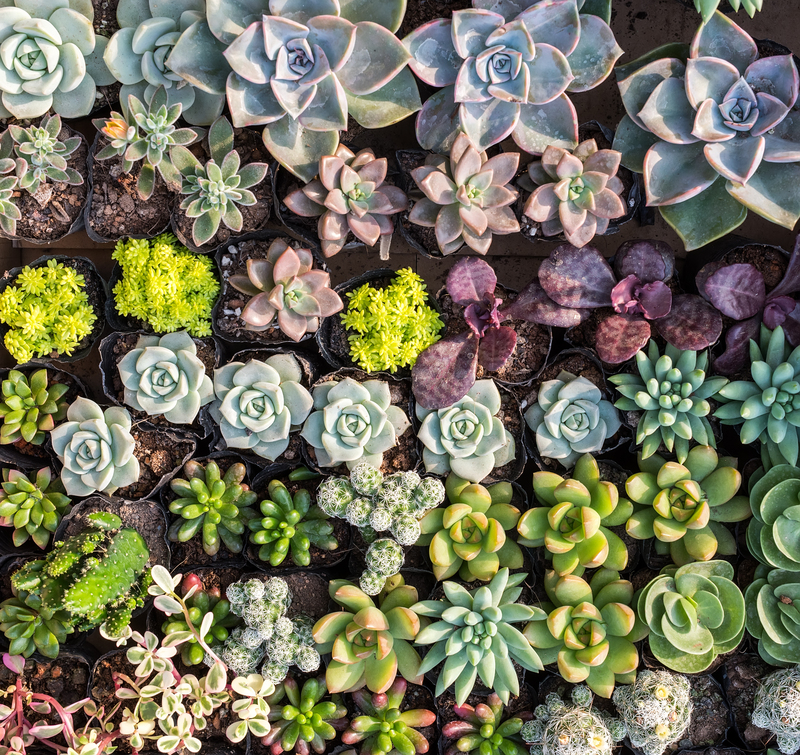Rescue Your Jungle-Like Garden with Easy Techniques
Posted on 16/08/2025
Rescue Your Jungle-Like Garden with Easy Techniques: The Complete Guide
If your outdoor space feels more like a wild jungle than a tranquil retreat, you're not alone. Overgrown gardens are a common challenge for homeowners and plant enthusiasts alike. Revitalizing a jungle-like garden may seem overwhelming at first, but with practical strategies and the right tools, you can turn your backyard chaos into a serene paradise. In this comprehensive article, you'll learn how to reclaim your overgrown garden using effective, simple, and eco-friendly techniques.
Why Do Gardens Become Jungle-Like?
Before jumping into garden rescue methods, it's wise to understand the root causes of an overgrown yard:
- Neglected maintenance: Life gets busy, and regular pruning or weeding can slip down your to-do list.
- Rapid growth: Some plant species, especially invasive ones, can multiply alarmingly fast if left unchecked.
- Poor garden planning: Overplanting or choosing unsuitable plants for your climate can cause chaos.
- Favorable conditions: Warm weather and plenty of rain can accelerate plant growth.
Now, let's discover how to tackle these issues and restore harmony to your outdoor space!

Step-by-Step Rescue Plan for Your Jungle Garden
1. Assess the Situation
- Walk through your garden and note what plants are thriving versus those that are struggling or dead.
- Identify which areas are most overgrown and require immediate attention.
- Look for hidden structures, pathways, or features that might be buried under foliage - these could be wonderful assets once revealed.
Tip: Take photos as you go. They will help track your progress and serve as motivation.
2. Gather the Right Tools
You don't need expensive equipment to rescue your garden from a jungle state. However, a few key tools will make your job far easier:
- Gloves and sturdy boots for protection
- Pruning shears and loppers for cutting back branches and thick stems
- Gardening fork and spade for digging and turning soil
- Rake to gather leaves and debris
- Wheelbarrow to transport green waste
- Trash bags for disposal
Having the proper equipment will make even the toughest tasks more manageable.
3. Clear a Safe Working Area
Begin by making a small clear zone near the entry point to your garden. This gives you space to pile debris and move tools. Work in sections and resist the urge to tackle everything at once--it's less overwhelming and produces better results.
4. Remove Large Weeds and Invasive Plants
Many overgrown gardens are plagued by aggressive weeds. Deal with them first:
- Pull out large weeds by the roots to prevent regrowth.
- Use a hoe or weed extractor for stubborn invaders.
- Research to identify invasive species and dispose of them properly, as some should not go in compost bins.
5. Prune Overgrown Shrubs and Trees
Pruning restores structure to your garden and helps healthy plants thrive:
- Use loppers for thick branches and shears for smaller growth.
- Remove crossing, damaged, or diseased wood to encourage healthy regrowth.
- Cut shrubs and trees back into shape, taking care not to over-prune in one go.
Prune thoughtfully to produce a balanced, lush--not wild--look.
6. Tame Ground Covers and Vines
Ground-cover plants and climbing vines can choke out other species and hide pathways or features:
- Trim edges back to pathways and beds.
- Remove overzealous spreading by cutting runners or gently digging out sections.
- If you wish to preserve some coverage, simply define borders to regain control.
7. Restore Pathways, Fences, and Garden Features
Uncovering structures buried under green growth is deeply rewarding:
- Clear away debris from paved paths, stones, or stepping slabs.
- Repair or replace broken fencing, trellises, or furniture as needed.
- Spruce up features with a pressure washer or a coat of paint for an instant transformation.
Bringing these features back to life enhances the usability and appeal of your garden.
8. Rejuvenate the Soil
After plants have been tamed, your soil may be compacted or depleted:
- Remove plant debris, roots, and stones.
- Loosen soil with a fork or tiller for improved drainage and root health.
- Add compost or mulch for a nutrient boost that will help new and existing plants thrive.
Healthy soil is the secret to a flourishing garden that's easier to manage.
9. Plan for the Future: Smart Garden Layout
With space cleared, you have the opportunity to plan a new layout:
- Select low-maintenance plants to minimize future chaos.
- Group plants with similar water and light needs together.
- Include mulch or ground covers to suppress new weeds.
- Create open areas for relaxation and easy access.
Strategic planning will prevent your garden from returning to its jungle-like state.
10. Establish Easy Maintenance Routines
Consistent care will keep your outdoor refuge under control:
- Pull weeds as soon as they appear.
- Prune shrubs and trees yearly.
- Monitor for diseases or pests.
- Add mulch annually to prevent regrowth of weeds.
Spending just 15-30 minutes a week monitoring and tidying will prevent future overgrowth.
Eco-Friendly Practices for Garden Rescue
As you restore your wild garden, consider sustainable practices:
- Compost green waste for natural fertilizer.
- Reuse stones, wood, or bricks for new pathways.
- Opt for organic pest and weed controls.
- Encourage pollinators by keeping some native wildflower patches.
Eco-conscious gardening supports local wildlife and ensures a healthy, chemical-free escape for your family.
Common Challenges When Reviving an Overgrown Backyard
- Bristly thorns or poison plants: Always wear gloves and identify unknown plants before removal.
- Tough roots or heavy branches: Don't hesitate to get help for larger jobs, especially with trees or invasive roots.
- Hidden hazards: Watch for animal nests, old nails or glass, and uneven ground.
- Physical exhaustion: Pace yourself--rest, hydrate, and break the rescue into stages.
Remember: Reviving a jungle garden is a marathon, not a sprint!
Creative Ideas to Transform Your Former Jungle Garden
Once your garden is under control, use your new canvas to impress:
- Create winding paths with gravel or stepping stones for a magical effect.
- Install a seating area or fire pit for cozy gatherings.
- Add raised beds or herb spirals for food and fragrance.
- Feature garden art, trellises, or awnings for shade and visual interest.
Your rescued garden doesn't just have to be tamed; it can be a showcase of creativity and tranquility.

Frequently Asked Questions about Jungle-Like Garden Rescue
- How long does a garden rescue take?
Simple clean-ups might take a weekend, but larger transformations may need several weeks or be divided into seasonal projects. - Do I need professional help?
If dealing with large trees, hazardous materials, or confusing layouts, seek professional advice or assistance. - How can I prevent my garden from becoming overgrown again?
Establish a monthly care schedule, choose slow-growing and easy-care plants, and use mulches to suppress weeds.
Conclusion: Rescue Your Jungle-Like Garden for Good!
Transforming a wild, overgrown yard into a beautiful and relaxing sanctuary is entirely possible--even for beginners. By using these easy, step-by-step techniques, you can reclaim your space, encourage healthy growth, and even discover hidden gems within your property. With a combination of proper tools, regular maintenance, and thoughtful planning, you'll be able to enjoy your newly tamed garden season after season.
Ready to start your garden rescue? Don't be daunted by the initial wildness. Step by step, your yard will evolve from jungle chaos to an organized, welcoming haven. Happy gardening!
- Share your own before-and-after pictures and inspire others to tackle their own "jungle garden rescue."
- Let us know your favorite garden rescue tips or challenges in the comments!

